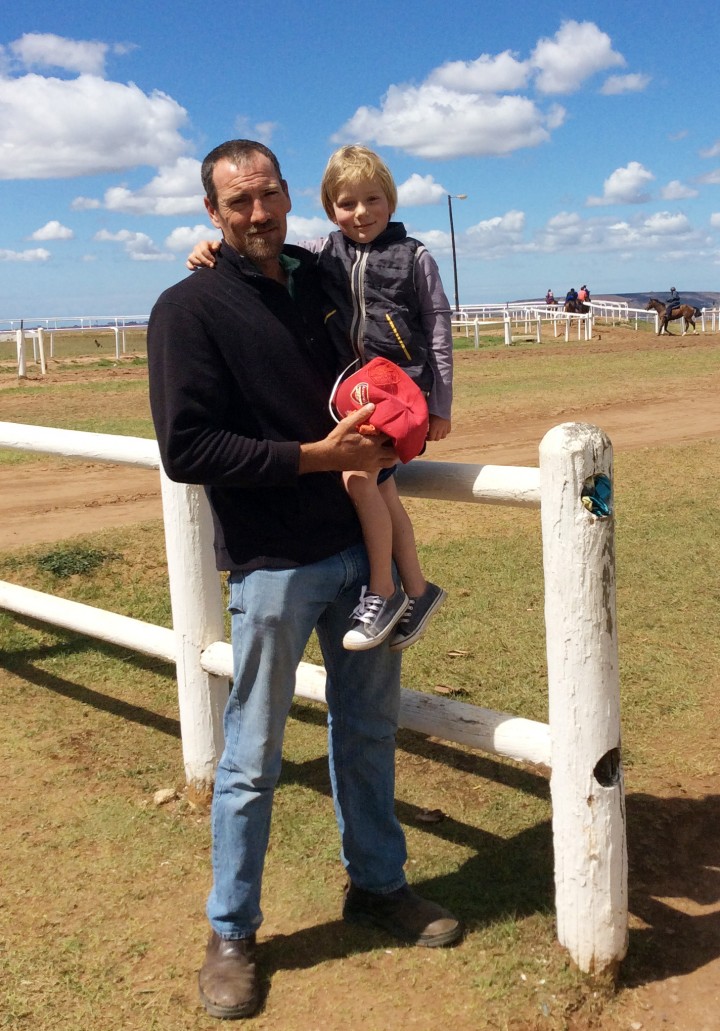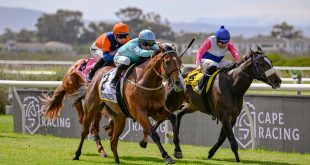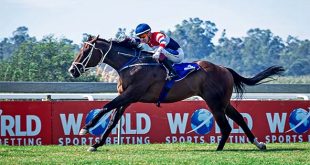Redgrave rode horses from a tender age and played polo cross for South Africa at U21 level. He had a natural affinity with horses virtually from day one, but his current expertise in equine behaviour also owes a lot to the fact that many of the horses he inherited during his youth were bad tempered sorts. Consequently Redgrave can spot a horse that has issues from the proverbial mile away.
He has also gleaned a lot from the methods of famous “horse whisperers” of the like of Monty Roberts, Pat Parelli and Buck Brannaman. Redgrave revealed that the three cornerstones of human to horse relationships are “trust, love and respect.”
He continued, “You can look at a herd from a distance and immediately see a horse that is saying ‘I don’t like you’. It will always be turning away from you. It is also easy to tell a horse that has been abused. They will try and walk around you and will never approach from the front. The front is the dangerous side of a human being.” Redgrave explained that, besides the physical, horses also mature at a “mental and emotional” level. Therefore, the more unyielding “pressure” a horse has been subjected to at a young age, the harder it will be to reverse the behaviour patterns later on.
In all equine disciplines a horse has to be put under pressure by a trainer at some stage in order to advance. However, the secret is “pressure and release”. If a horse knows there will be a release of pressure, it will become more and more willing and the need to put it under pressure to achieve a goal will become less and less. A simple example of pressure and release is when leading a horse by a halter. If the horse refuses to follow it is pointless pulling it, because it will then fight back. The best approach is simply to maintain the pressure until the horse realises it is not going to win, so steps forward. As soon as the horse steps forward, the pressure on the halter must be released, and hence the horse is rewarded.
“Good schooling is often simply about patience and good timing,” said Redgrave. In the racing game, the pressure and release system can be seen just about everyday on our TV screens. Talented riders are quickly able to relax a horse that begins throwing its head around by subtly releasing pressure on the rein. However, an inexperienced or poor rider will only exacerbate the horse’s headstrong antics by panicking and grabbing a tighter hold of the rein.
During schooling, respect is the first principle that must be taught. After a horse has shown it will be submissive i.e. during lunging it begins licking its lips (equine language interpreted as “I am a herbivore and will not harm you”), it can then be allowed to come in closer. Trust building excercises are the next step. Finally, love must be shown by giving the horse something it will enjoy, such as a watering down after exercise to cool it off.
Another adage Redgraves uses is, “Train the brain and the body will follow.” Poor schooling of a horse will quickly snowball out of control. An example in horseracing is that when a horse has to be loaded on a float to go to the races and refuses to do so, the transporters usually have no option but to use forceful methods, as they have deadlines to meet. The horse will therefore take another step backwards in its relationship with humans due to the inadequate schooling it had received in the first place from its trainer/s.
Of course it would be simplistic to merely blame the current trainer, because they are often quite well down the line in terms of human masters, are often under pressure to race horses as soon as possible and usually have many horses to deal with. “Horse whisperers” can help speed up the process of getting the horse ready for the races and can also help reverse an increasingly bad attitude.
Redgrave pointed out another common phenomenon among sports horses. It has become traditional to do almost everything with a horse from the left side, e.g approach, equip, hold, saddle, mount etc, and a string of horses will invariably ring left-handed too. Therefore, a horse becomes comfortable with pressure from the left side, but will suddenly become alarmed when receiving it from the right. Redgrave said it would not be uncommon for a horse on a bridal path to trot past a foreign object to its left side without batting an eyelid. However, upon returning the object will now be on the right hand side and the horse will suddenly “spook”.
Although the left side traditions will likely never change, Redgrave said it was vital to put pressure on a horse on both left and right hand sides from as early as possible and throughout the schooling process. The starting pens are the most traumatic part of a racehorse’s schooling and this often has to do with a lack of schooling from the right hand side, because the framework of the stalls will obviously be in close proximity to the horse on both sides. A bad experience at the starting stalls can influence a horse’s perception of them for a long time and possibly even forever. Redgrave does wish that the old adage of “prevention is better than cure” could be applied more often to schooling at the pens. A horse that is showing resistance should never be forced to do what it doesn’t want to, but rather the trainer should be notified and further schooling could then be done even it if requires the help of a “horse whisperer”. In the long run this could well save a racehorse’s career.
Redgrave has already earned the respect of many of KZN’s most experienced trainers and will definitely be a name that is going to be heard of regularly in the horseracing industry in time to come.







